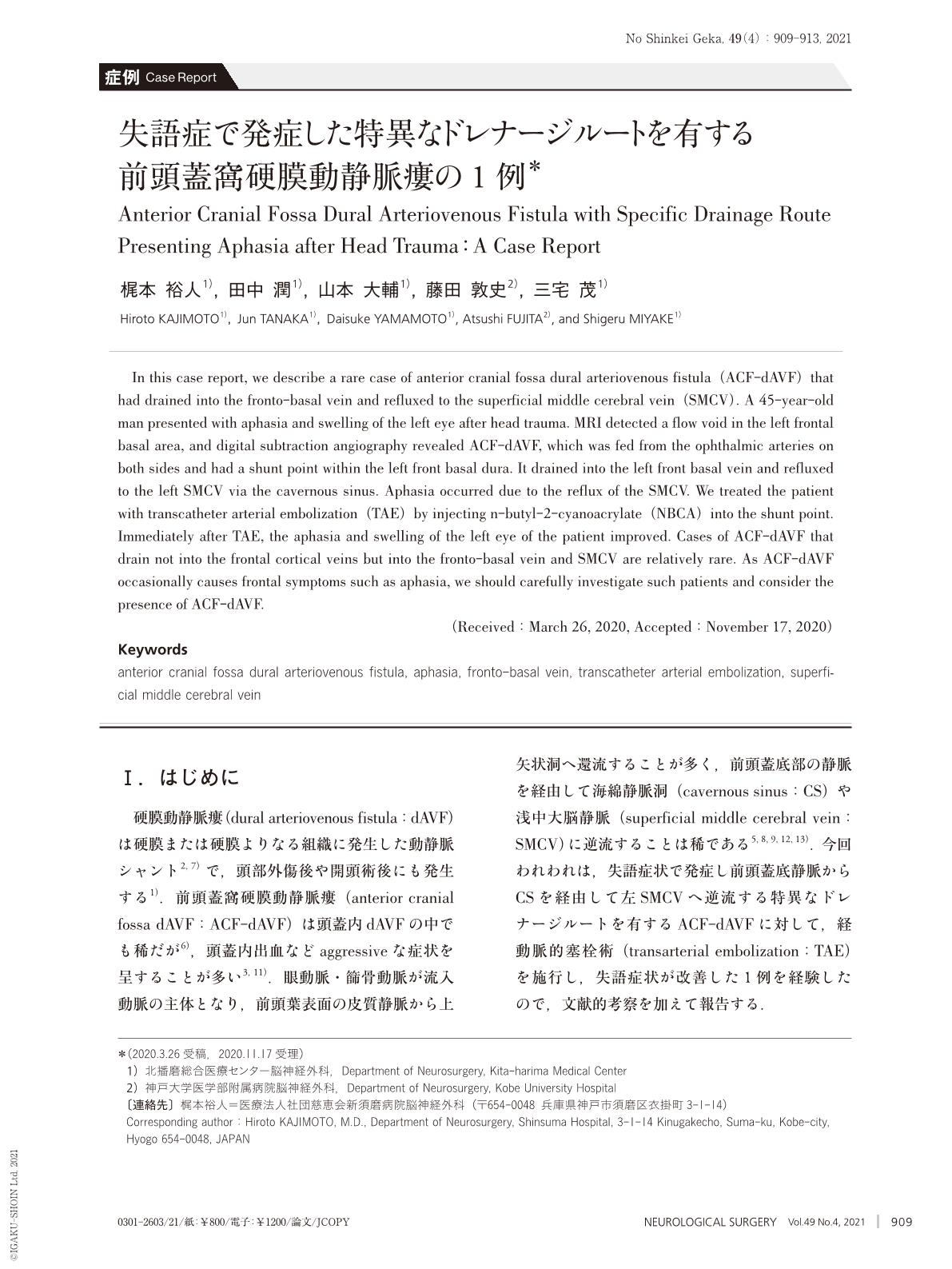Japanese
English
- 有料閲覧
- Abstract 文献概要
- 1ページ目 Look Inside
- 参考文献 Reference
Ⅰ.はじめに
硬膜動静脈瘻(dural arteriovenous fistula:dAVF)は硬膜または硬膜よりなる組織に発生した動静脈シャント2, 7)で,頭部外傷後や開頭術後にも発生する1).前頭蓋窩硬膜動静脈瘻(anterior cranial fossa dAVF:ACF-dAVF)は頭蓋内dAVFの中でも稀だが6),頭蓋内出血などaggressiveな症状を呈することが多い3, 11).眼動脈・篩骨動脈が流入動脈の主体となり,前頭葉表面の皮質静脈から上矢状洞へ還流することが多く,前頭蓋底部の静脈を経由して海綿静脈洞(cavernous sinus:CS)や浅中大脳静脈(superficial middle cerebral vein:SMCV)に逆流することは稀である5, 8, 9, 12, 13).今回われわれは,失語症状で発症し前頭蓋底静脈からCSを経由して左SMCVへ逆流する特異なドレナージルートを有するACF-dAVFに対して,経動脈的塞栓術(transarterial embolization:TAE)を施行し,失語症状が改善した1例を経験したので,文献的考察を加えて報告する.
In this case report, we describe a rare case of anterior cranial fossa dural arteriovenous fistula(ACF-dAVF)that had drained into the fronto-basal vein and refluxed to the superficial middle cerebral vein(SMCV). A 45-year-old man presented with aphasia and swelling of the left eye after head trauma. MRI detected a flow void in the left frontal basal area, and digital subtraction angiography revealed ACF-dAVF, which was fed from the ophthalmic arteries on both sides and had a shunt point within the left front basal dura. It drained into the left front basal vein and refluxed to the left SMCV via the cavernous sinus. Aphasia occurred due to the reflux of the SMCV. We treated the patient with transcatheter arterial embolization(TAE)by injecting n-butyl-2-cyanoacrylate(NBCA)into the shunt point. Immediately after TAE, the aphasia and swelling of the left eye of the patient improved. Cases of ACF-dAVF that drain not into the frontal cortical veins but into the fronto-basal vein and SMCV are relatively rare. As ACF-dAVF occasionally causes frontal symptoms such as aphasia, we should carefully investigate such patients and consider the presence of ACF-dAVF.

Copyright © 2021, Igaku-Shoin Ltd. All rights reserved.


